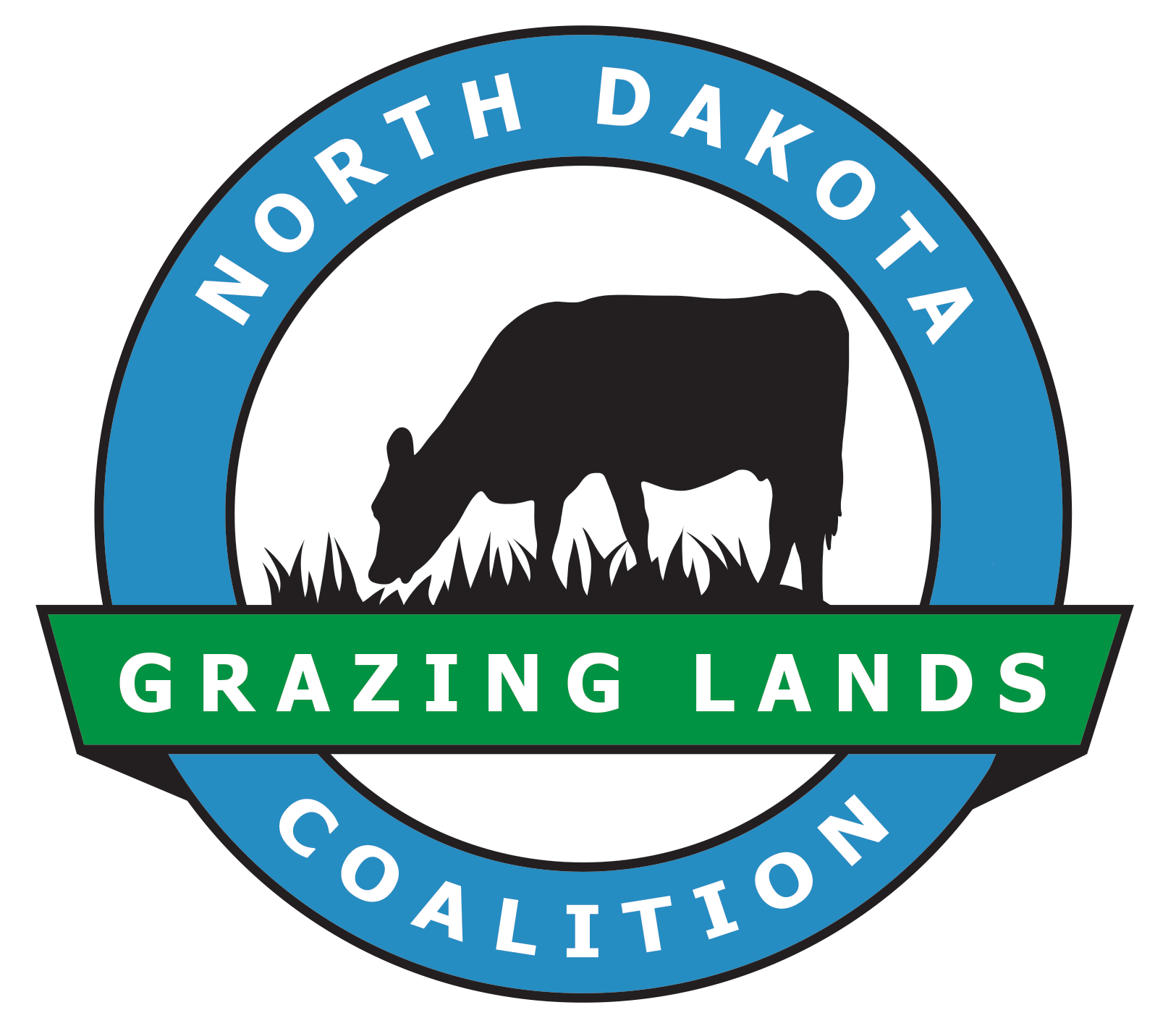How NDGLC Began
The North Dakota Grazing Lands Coalition (NDGLC) was organized by a grassroots group in 1996 to promote the health and sustainability of North Dakota’s 13.5 million acres of grazing lands.
The NDGLC believes that through voluntary actions, respect for private property rights, and education on the values and multiple benefits of well-managed grazing resources, these goals are achievable. Cooperatively, the coalition’s goals are to provide local leadership, guidance, information and technical assistance to grassland managers. Given the appropriate tools and training, grassland managers will be better prepared to make cost-effective and environmentally sound decisions.
Coalition members have a very strong focus on the importance of managing for soil health and systems biodiversity as a key to sustainable farming and ranching. They continue to implement and demonstrate new technologies that: improve soil health, productivity and profitability, reduce input costs, and integrate livestock and crops in a whole farm systems approach. They work through the kinks that are always a part of the transition to new technology, and are positioned and willing to assist other producers in making those adjustments.
Grazing land is a collective term for land which supports plants suitable for harvest by grazing animals managed primarily through grazing management. This could include range land, grassland, native prairie, pastureland, grazed forest, native and naturalized pasture, hay land and grazed cropland. All programs and services are offered on a non-discriminatory basis.
Vision
Healthy grazing lands for future generations.
Mission
To improve stewardship by providing technical assistance to producers regarding regenerative and profitable grazing management and building conservation awareness by educating citizens and policy makers.
Our Purpose
To promote the health and sustainability of North Dakota grazing lands through:
- Voluntary actions
- Respect for private property rights
- Education of the values and benefits of well-managed grazing lands
- Strengthening partnerships between grazing land manager and others who support the purpose of the Coalition
- Increasing the economic, social and environmental stability of grazing lands
Listed below are some important reasons why integrating livestock back onto the land is beneficial as well as a few ways to accomplish this.
Why do we want to return livestock to the landscape?
- Fall or winter grazing converts high carbon annual crop residue to low carbon organic material; balancing the carbon/nitrogen ratio and managing crop rotation residue for no-till seeding.
- Spring or summer grazing, annual and/or perennial plants, with short exposure periods followed by long recovery periods; allows the plants to regrow and harvest additional sunlight and CO2.
- Reduces nutrient export from our cropland and hayland fields, recycling the majority of nutrients, minerals, vitamins, and carbon.
- Aids in weed pressure management.
- Grazing cover crops and/or crop residues allows livestock to be taken off perennial grasslands earlier in the fall, extending the grass recovery period, and providing a higher nutrition diet for livestock.
- Grazing reduces livestock waste associated with confinement; helping manage our water quality and nutrient management concerns. Allowing cattle and sheep to be herbivores by securing their energy needs from plants.
How do we return livestock to the landscape?
- Fall and Winter grazing of cover crops and annual crop residues.
- Summer grazing of full season cover crop, allowing adequate plant recovery, followed by a second grazing during the fall or winter.
- Winter feeding on hayland fields by rolling out bales or bale grazing.
- Seeding rotational perennials, grazing and managing them as part of the crop rotation.
